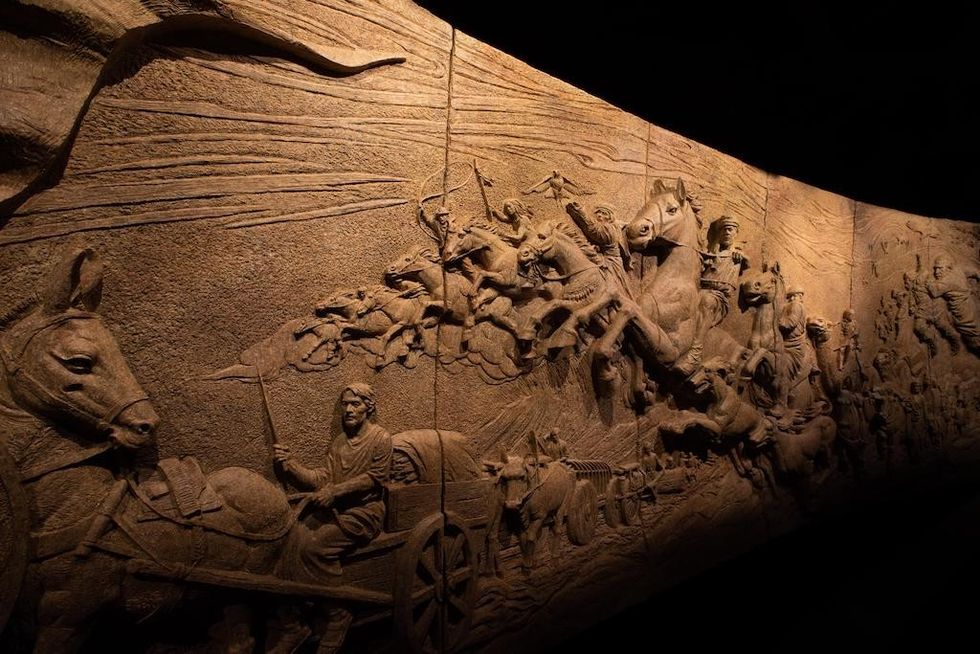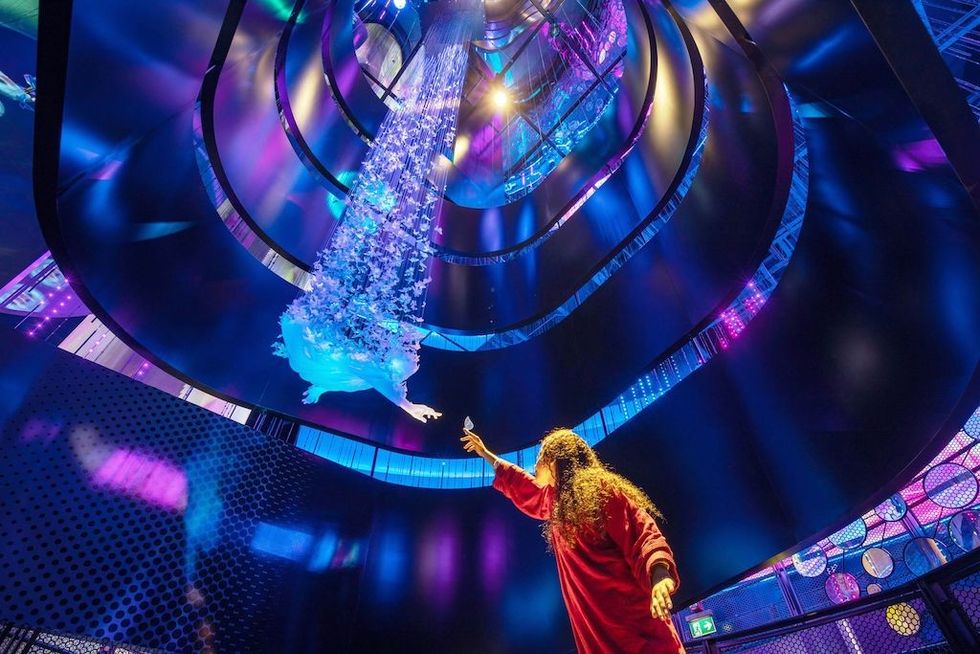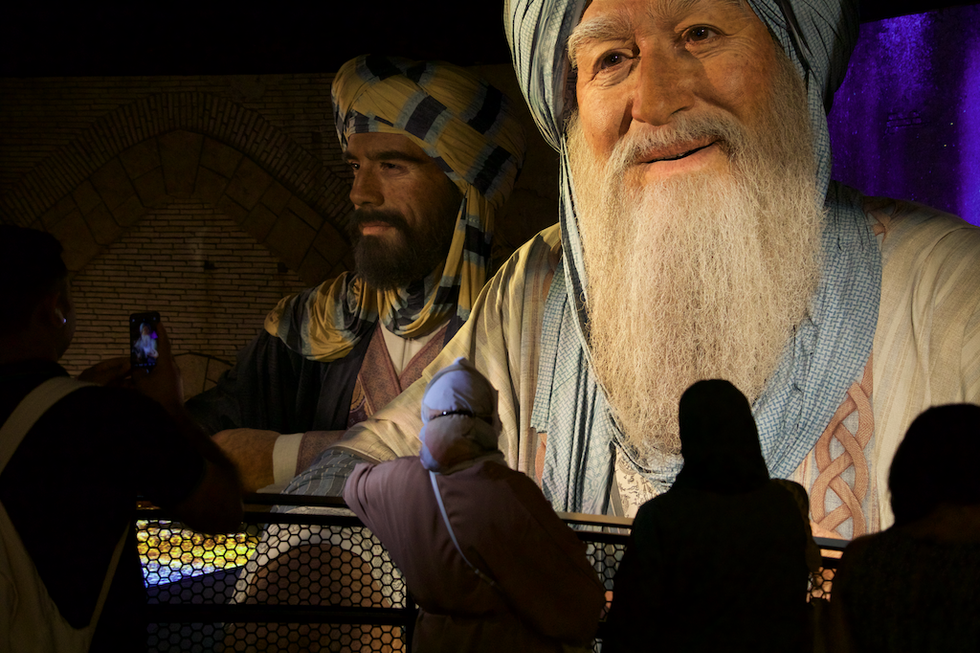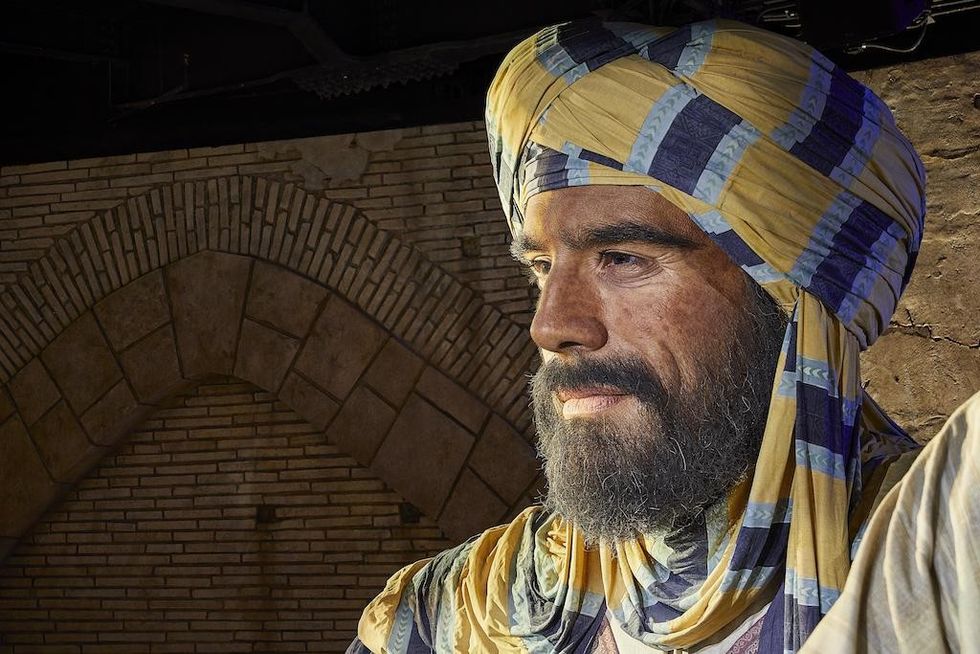‘If you haven’t got a good story it doesn’t matter at all how much technology you throw at it.’
Electrosonic, the internationally renowned multi-million dollar AV business with headquarters in Burbank, CA., celebrated its 50th Anniversary this year.
Blooloop spoke to Electrosonic’s co-founder and director, Robert Simpson ( below ) about the company’s evolution from its origins as a start-up with two rooms in London’s Greenwich vegetable market; a journey characterised by adaptability, clear-sightedness and a certain amount of luck.
Origins: Oxford and Recorded Sound
Simpson studied physics at Trinity College, Oxford where he worked backstage for both OUDS (the Oxford University Dramatic Society) and for the Experimental Theatre Club and created a mini-business out of providing lighting for college dances.
When he left Oxford in 1961he planned to travel to South Africa for a few weeks but was side-tracked by a temporary job at Recorded Sound Ltd, one of the first independent recording studios in London set up by BBC veteran Lynton Fletcher.
The temporary job quickly turned permanent. Fletcher offered Simpson a job as ‘Technical Manager’ for the non-studio activities, promising the company would pay his fare to South Africa sometime in the future.
Simpson says, “The company, although primarily a recording studio, also did work in exhibitions and trade shows doing sound and light sequences. There were very few people doing that sort of thing at the time.
Some of the jobs we were doing – particularly for the Post Office and ITA as it then was (the Independent Television Authority) became quite complex and we didn’t really have the resources to do them, and it was a stroke of luck that in advertising for extra staff we attracted a couple of guys [ Mike Ray and Denis Naisbitt ] who worked for the Post Office on the telephone side, and they had enough time to moonlight a bit.”
Over the next eighteen months to two years, it became increasingly evident that the sound recording studio wasn’t the ideal base for the work they were doing, and Naisbitt, Ray and Simpson conceived the idea of setting up on their own. Lynton Fletcher, the studio’s owner, was amenable to the notion, and Robin Prater, a sound engineer, joined the three.
Launching the Business
With the support of their former employer, the transition into having their own business was therefore seamless. After a number of other names had been rejected by Companies House, Electrosonic was registered as a company in March 1964.
The agreement was that the new company would complete any work already committed and would not approach Recorded Sound’s existing customers and “within two or three years we were really doing negligible business for the old company: it was all new business, which we’d developed ourselves.”
Simpson says, “I think we were lucky in some ways – we had a few connections which enabled us to get business – but the field was really quite open and we were doing things which were only just becoming practical because of technology developments.”
He spotted very quickly that if the company limited itself solely to working on individual events, it would be hard to succeed: the events were quite widely spaced and it was a matter of luck whether the organisers wanted the kind of services Electrosonic could offer.
“I said, ‘We need to have a product – or products, preferably.’ And the key to that was the electronic dimmer. I’d always been interested in lighting control and lighting as a subject, and by chance, only very few years before, a new power electronic component called the silicon controlled rectifier had been invented and clearly was potentially a very good controller of light.
“And that was the key, not only to us having a product to sell, but also to eventually producing an audio-visual product which was the dissolve unit. Now, that only worked if you had a good slide projector, and the timing of the start of our business was the same time that Kodak introduced the carousel projector. It was a combination of the Kodak carousel projector and our ability to make an electronic dissolve unit which started us in the audio-visual business in a significant way.”
Meeting the demand
From then on, Electrosonic’s progress was fairly logical. A demand for both lighting and audio-visual control grew - for many years both were equally important to the business. It was only later, as Simpson puts it, “that we split out the lighting side.”
Similar things were happening in other parts of the world, and Electrosonic quickly realised that the type of work they were doing made it essential that they work internationally in order to stay abreast of new developments. Again, according to Simpson, luck intervened in the form of opportunities to work abroad which led to them being able to set up small companies in other countries.
At its peak, when the company was making numerous products, about 50% of its business was exports. Inevitably, however, a conflict eventually arose between specialising in doing major projects – for expos and so on - and concentrating on perfecting products.
For a while, Electrosonic became very product-oriented and, at one point, had a factory that employed 200 people assembling electronic products.
Simpson says, “that could have been followed through. Equally, if you’re doing projects there’s a little bit of a conflict, because the channels through which you want to sell your products are your competitors in the project field. But from our point of view it was a very long time before that issue arose. In the meanwhile, technology moved ahead at a phenomenal speed. If you were going to concentrate on products, you had to become an absolutely total specialist.”
In the event, some of those companies that did become specialists were very successful for a few years but then their technology went out of date, and their businesses evaporated. At the height of Electrosonic’s products business they had a number of competitors, not one of which exists now.
“We, on the other hand, because we always enjoyed what we were doing, and liked the end product – we wanted to see the show. We still survive, although the way we survive is different from how we were twenty years ago. On the other hand, it’s remarkably similar to how we started in the sense that, I’m not saying we’ll do anything at all, but we’re up for a challenge, and we’d like to keep it that way.”
Highlights and specific projects:
Speaking about milestone projects, Simpson says, “One of the most important ones right at the beginning was when we did the sound and light control for the Battle of Trafalgar attraction at Madame Tussauds ( above ) ... for Theatre Projects.”
The main feature of the attraction was a reconstruction of HMS Victory’s gun deck, complete with figures, guns, smoke, the scents of gunpowder and tar, and loud sound effects. A moving backdrop was visible through the portholes to strengthen the impression of a ship at sea. Visitors moved next to a section which used animated lighting displays. The attraction used a system of fully automatic lighting synchronised to the multichannel sound track, made possible by Electrosonic’s recently developed ES1006 automatic electric dimmers, its work on synchronised light and sound for exhibitions, and its message repeater products.
Simpson explains the project led on to other “high quality permanent installations and we were genuinely one of the only companies who could do it at the time; one of the only companies that understood what the issues were and could build something which would last for many, many years.”
The Kodak Carousel Vision show ( below ), in which 40 slide projectors were synchronised to a specially composed music track, followed in 1968.
Simpson says that it “was seminal because it was a combination of programmed slide projectors and the automatic slide projector itself that started what became the AV business which, we mustn’t forget, right up to the end of the 20th century, was largely based on slides. And that went on to let us into things like big tourist attractions that we call the ‘experience shows’.”
Electrosonic’s work on the Carousel Vision Show was also key to their getting export business: “ …the fact that so many international people saw the Carousel Vision show [meant] that we didn’t have to go looking for customers: they came looking for us.”
Prior to the arrival of the laser disk, moving pictures couldn’t be shown in a museum – it was far too expensive, and using film was complicated and tedious. So the invention of the laser disk, which in practical terms became available to use in 1985, though the idea had been around for a bit longer, was very important.
Right from the beginning Electrosonic did a lot of work in EXPOs, or international expositions. EXPOs are thought to have been started by the Great Exhibition in London in 1851, and became popular in the second half of the 19th Century. These days they can be multi- billion dollar events run by a country or region that lasts for six months. Between 1967 and 2010 Electrosonic carried out installations in 15 different EXPOs.
Simpson says, “The job I enjoyed most of the EXPO jobs, I think, as it was great fun to do, was the video wall for the Telecommunications Pavilion in Expo ’92. That used 850 old-style TV sets in one big video wall, which was both great fun and also quite a serious piece of engineering: how did you do a thing like that and, particularly, how did you do a thing like that for the budget? We were proud that we were able to deliver on that and also it was fun that the whole thing then moved to Futuroscope; that it didn’t just die at the end of Expo: it ended up in the theme park for many years.”
A few years later Electrosonic were involved with the Newseum 1 in Arlington just across the Potemac from Washington (reborn as Newseum 2 in Washington in 2008). Simpson says, “That was groundbreaking – it really was. We developed a video multi-image system that was way ahead of the capability of any stuff you could buy off the shelf at the time. Although it had an origin in product development, in fact it was pretty well specially done for the project. It actually set going the idea that you could do 120 foot wide video pictures – up to then people didn’t think video could be done big-screen let alone with over thirty separate moving images on the screen at once. Installations like that – there were others – indicated the arrival of electronics replacing film and replacing chemical images.”
The last of the project highlights Simpson mentions is one with which he was personally involved right at the beginning: the original Spiderman attraction at Universal Studios:
“This was done with film – I must emphasise that this was in the days of 70mm film – and we started on the project in the mid-1990s before even ground had been broken, because the development of the projection system for that attraction had to be done before they could start [constructing] the building. We were involved in that because we showed we could do it. The requirement for the use of 70mm film in that attraction was quite onerous.”
The story is told in detail in Bob Simpson’s book, ELECTROSONIC: 50 YEARS ON THE AUDIO-VISUAL FRONT LINE. In essence, Universal Studios theme parks emerged as a force in the industry and, in 1996 when Universal Studios planned a major investment to create what would become The Amazing Adventures of Spiderman, the chances of Electrosonic winning the project seemed slim. And then Jim Bowie (who became Electrosonic CEO in 2008) pointed out in the proposal that the lenses and screen brightness requirements on the proposal document were wrong.
Simpson takes up the story: “Jim Bowie and myself worked on the actual proposal in order to get the job, but primarily to demonstrate we knew what the problems would be.”
Simpson assured Universal that Electrosonic would stick with them for the three years it would take to complete the project.
“It was a seminal attraction, and we can’t claim any credit for the whole idea – all the credit we can claim is solely on the basis that we got things to work, and that’s what we like to do.”
As a postscript to the project, in 2012, thirteen years after the original installation, Universal announced the completion of a major upgrade: Electrosonic had engineered their new projection system which involved replacing the 70mm film with the latest high-resolution electronic projection, and changing the 3-D viewing system from the polarized light method to the Infitec color bandpass method.
Anticipating the Future
When talking about the particular advances in technology that have shaped the industry, Simpson maintains that the principles of what can be done with programmed light and sound, (which have been around since before Electrosonic began), are exactly the same as they were fifty years ago. Although now much greater flexibility has been achieved through the development of memory lighting units and so on, the concepts themselves have remained the same.
What has changed is the introduction of projection as a reliable method of scene presenting without the need for operators. Even cinema, which prior to this advance needed full-time operators, can be done unmanned.
“And the things that have most recently made a difference in the advances in projection in our terms are firstly, moving from slides to 70mm to all-electronic projection systems - and most recently we’re looking at new, very high-power projection systems .
“Alongside that, what’s made the whole system practical is the arrival of high-capacity video servers to actually deliver high resolution images at a reasonable price, and allowing the production process to be fairly simple. Those, I think, are the particular advances.”
And the future?
“Where does the future lie for the audio-visual and the attractions business? One could come out with all sorts of glib answers to that. I would say in the attractions business, it’s not to do with technology. All the great attractions have always been about story, we all know that. If you haven’t got a good story it doesn’t matter at all how much technology you throw at it, it’s not going to work.
“So the question of whether any kind of technology will enable a story to be told that can’t be told at the moment is a difficult one to answer, because you could come up with all sorts of theoretical ideas which in practise might happen one day but – believe you me – they won’t happen in the way that people thought.”
Technology has never moved in a smooth way. It was obvious to the industry in the latter half of the twentieth century that the changeover from laser disk to video server would happen, but it didn’t happen when people predicted. It happened much later, and when it did happen it happened much more quickly: in a period of months rather than years.
“And the same sort of thing has happened with high-resolution presentation. We lived for years with standard definition video, and then almost overnight we went not only to high-definition but now to what is called 4-K. It all happened very quickly. And it happened because of the exponential rise in server capacity and server speed. And you could have predicted that – there’s a thing called Moore’s Law that could have predicted that this would happen – but it wouldn’t have told you precisely when everything came together. Therefore trying to predict what might happen next is, I think, a mug’s game. I always advise people never to contemplate future-proofing installations, because you will always future-proof it the wrong way.”
Simpson illustrates this with a salutary anecdote: “There’s one classic example from when we did a major international museum where the owners insisted on putting fibre optics throughout the museum, then had very little budget for the actual system they needed for the opening.
“We put a bid in to do the job using their fibre optics which was precisely double what we could do the job for conventionally, so we put the conventional system in. The fibre optic system never got used because by the time the technology caught up with what they thought was future-proofing, their fibre-optic system itself was completely out of date. So never future proof: it’s a complete waste of money.”
He reiterates, “I say the future lies in stories. It does not lie in technology. I could rabbit on about light fields and holograms and things like that, but none of these things will themselves be the making of a completely new attraction. Some of the ideas will be incorporated into attractions, but some of the concepts are much more complex than people realise. To do light field projection, for example, you need about a hundred projectors to produce a single image, which is a little impractical. You can do it on a small scale, but nobody wants to look at peepshows; they want something that envelops them.”
The point to remember, Simpson contends, is that as long as the stories keep coming, the current technology can be better applied. And pragmatism plays a part. “Our work is entirely devoted to matching a client’s concept to reality. And the reality may be what can technically be done, and what can they afford. In many cases the two don’t match.”
Two Key Lessons
Simpson points out that while most people have an idea that businesses automatically develop, “they can’t. There’s a huge element of luck involved, whether people admit it or not; there are a lot of external circumstances which determine how you go. We had a very easy start because we were one of the only companies doing a particular thing; in the field of electronic lighting control we were one of two or three companies when we started. Now, I should think there are at least a hundred in the UK alone. So competition definitely comes in.
“But two related things strike me. First of all, businesses depend entirely on people. A business’s fortune depends very much on people; the direction that a business takes will depend on people and on people being interested and willing to do what you want. It was no good, for example, me some years ago saying that I was interested in something particular if in fact the people doing the business day to day simply couldn’t get up any enthusiasm for it. No matter how hard you try, you can’t push people into doing something about which they’re not enthusiastic. You either have to find different people, or you have to move the business.
“One of the interesting things; one of the reasons we’ve survived is because we’ve been willing to change direction in the light of new technology; in the light of the people; in the light of the available team.
“Secondly, a corollary of that which is also interesting is that inevitably, if you have a business of any size, there will always be people who don’t quite fit; or want to go and do something different; or leave; or want to set up their own businesses. We must have spawned dozens of businesses, in fact, because we were doing something new – it wasn’t unnatural that people wanted to go and do it for themselves.
“The golden rule there is never, never let there be sour grapes, even if in some cases they might be justified - because sometimes people who might have left you can reappear as best friends in another guise, particularly when technology changes. I think a very important lesson is: Always leave the door open.
“I’m pretty certain actually that in our industry that’s pretty universal. On the whole, it’s a nice industry and people get on with each other, but I think this is very important because… you simply never know… There’s one example where we had to make one or two changes, and had someone leave one of our offices. Within a year they had brought in a multi-million dollar job for us. So we were not grumbling. It could have been the case that it wasn’t such a good relationship, but in fact it developed into an excellent one. And I think that’s an important lesson for everybody.”
Images from the top
1. Spider-Man as featured in BKSTS Cinema Technology magazine September 1999. Image courtesy of and © Universal Studios.
2. Robert Simpson
3. The ES2002, a two-speed dissolve unit for slide projection from the late Sixties.
4 . The founders: Robert Simpson, Michael Ray and Denis Naisbitt in 1974.
5 Gun Deck Trafalgar at Tussauds
6. Carouselvision rotunda 1968
7. Sketch from “L’Exposition Universelle de 1867 Illustreé” showing the hydraulic lift attraction. The Great Exhibitions, 1st, 1977, John Allwood, Studio Vista. Reproduced in Allwood.
8. Bob Simpson’s book, ELECTROSONIC: 50 YEARS ON THE AUDIO-VISUAL FRONT LINE.
9. A recent Electrosonic project: The North Carolina Museum of Natural Sciences’ New Nature Resource Center (NRC) in Raleigh, North Carolina. Credit: Batwin+Robin
10. Caltrans District 7, Los Angeles: An example of a control room project.
11. Museum of Science and Industry, Chicago
12. World headquarters in Burbank, California



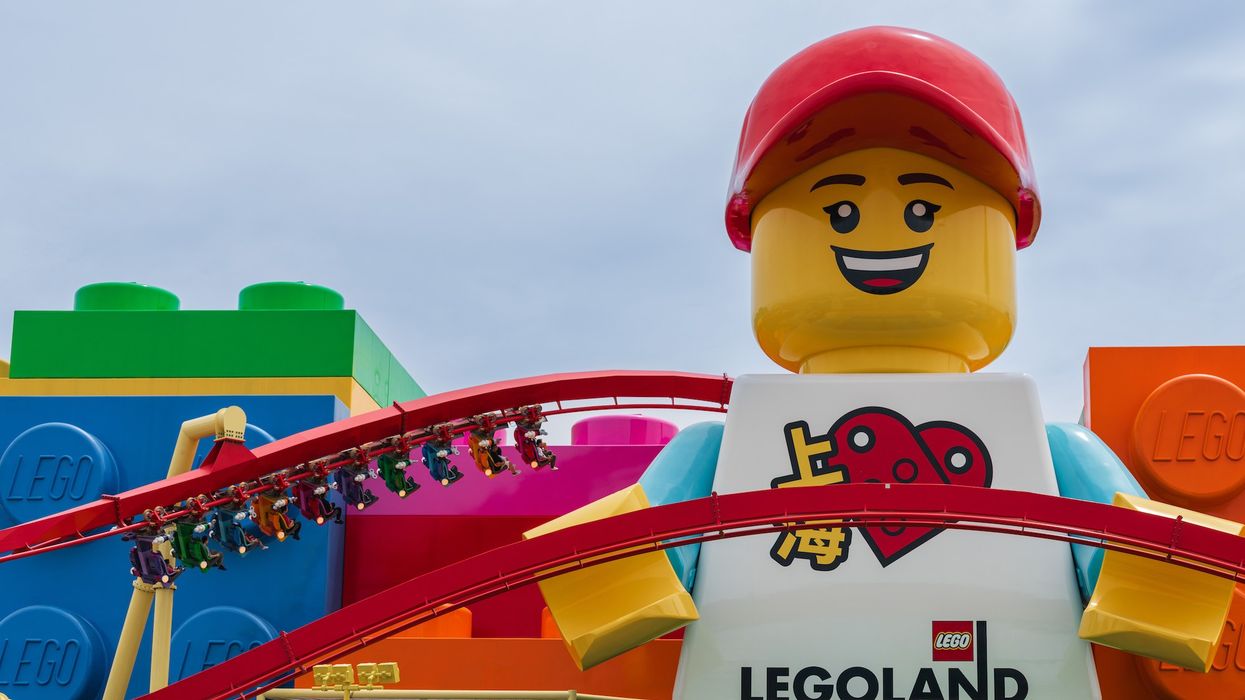
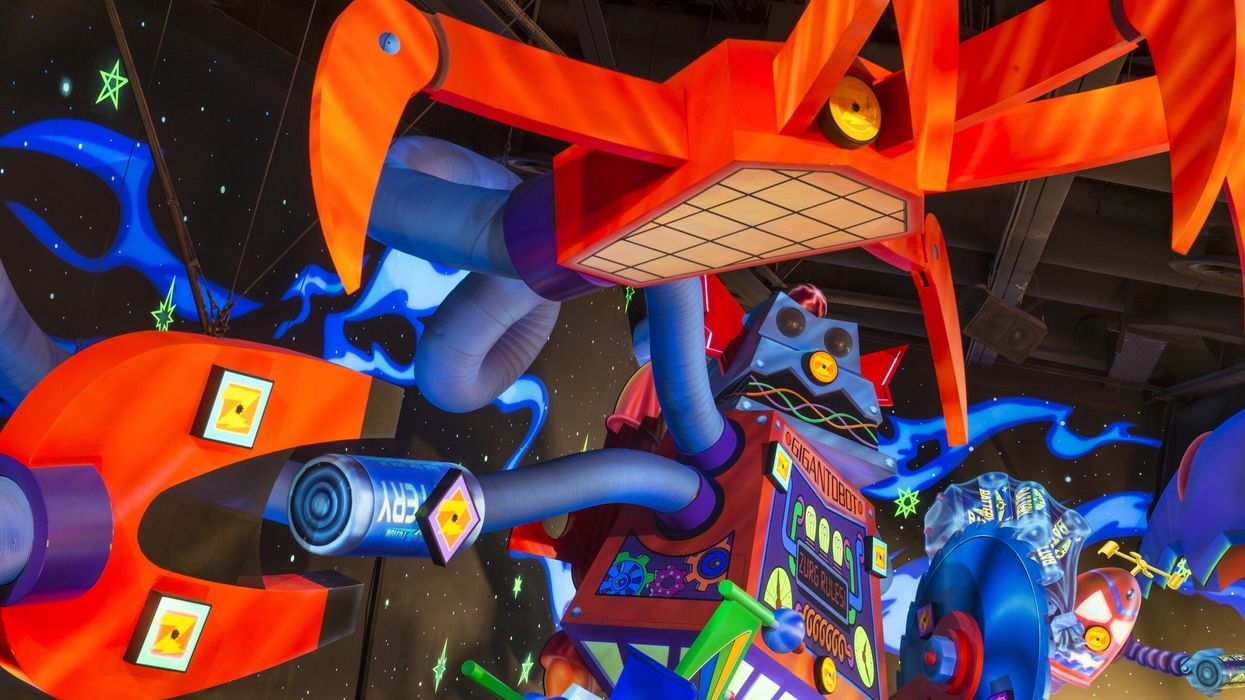


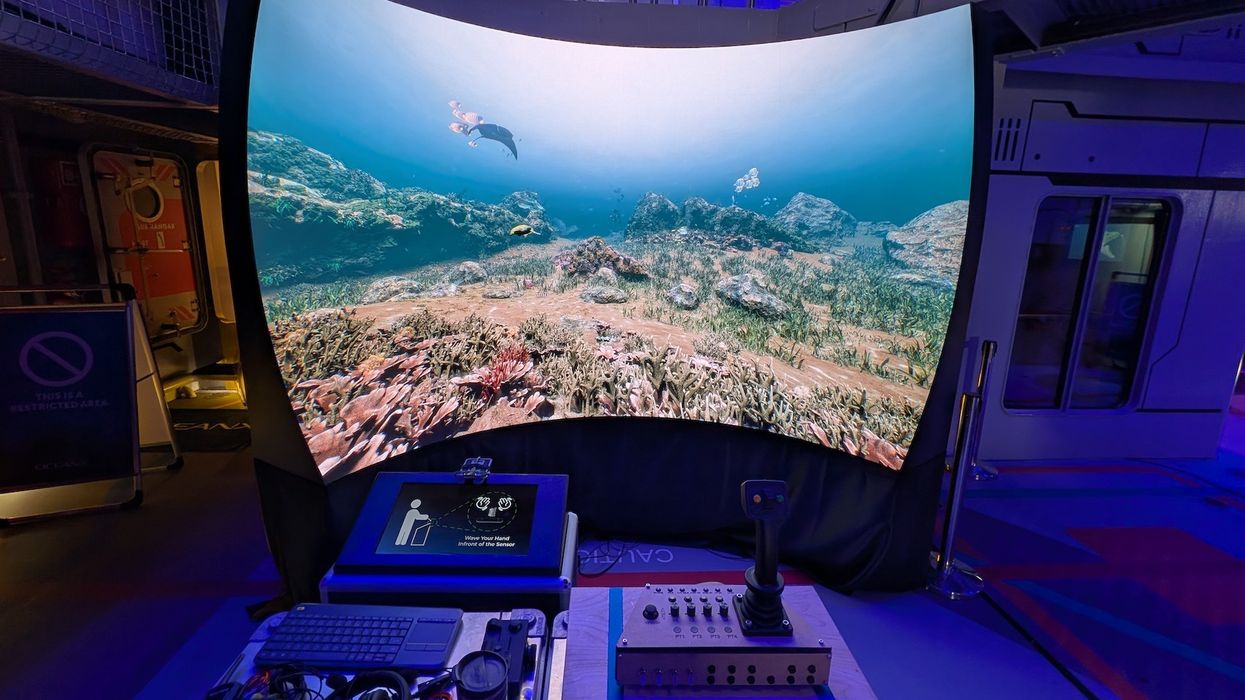
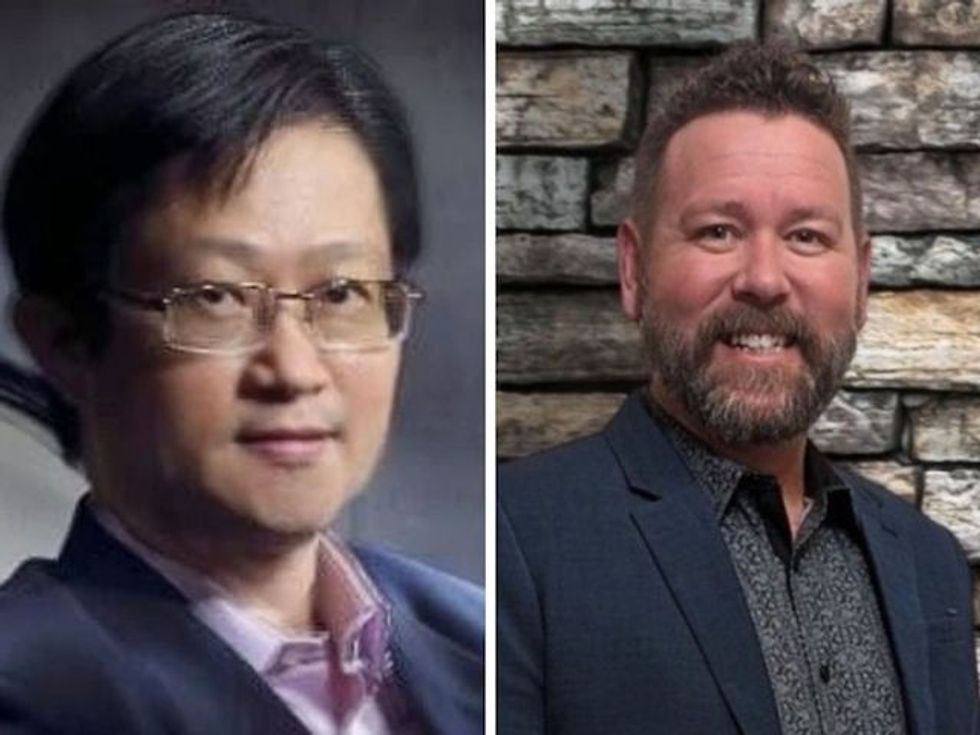 TM Lim and Adam Wales
TM Lim and Adam Wales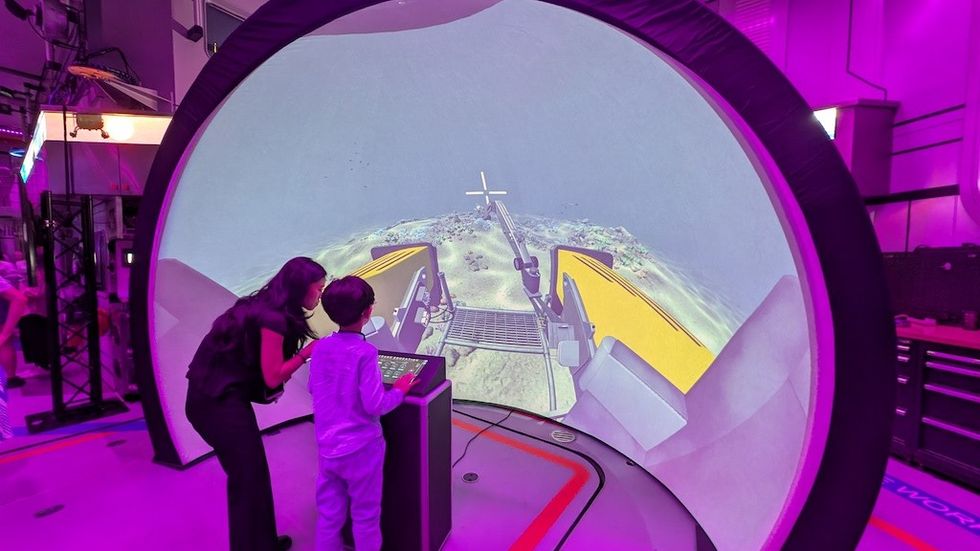
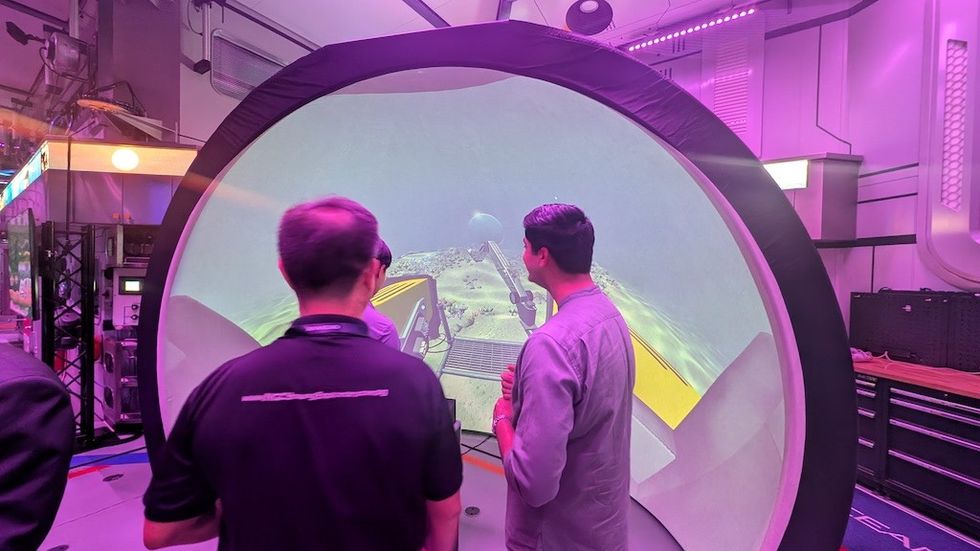
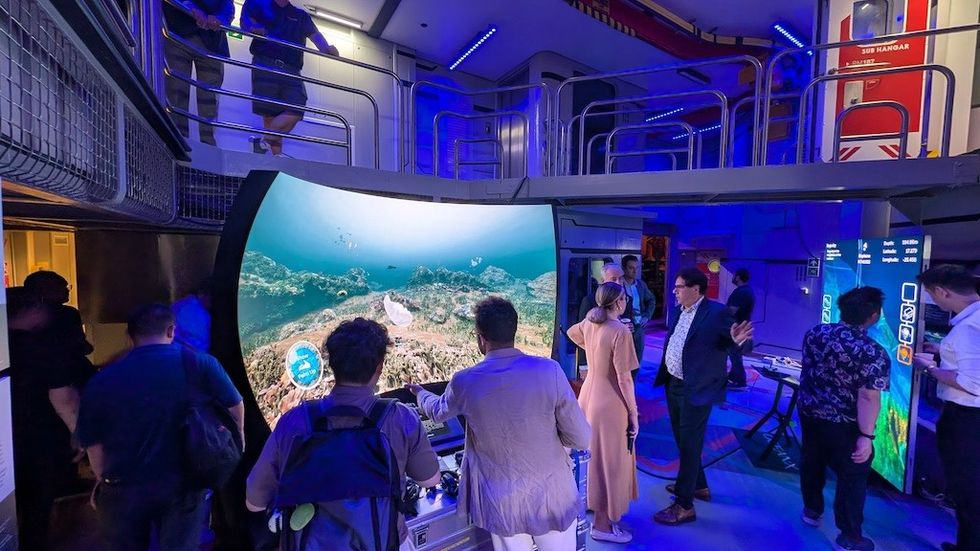

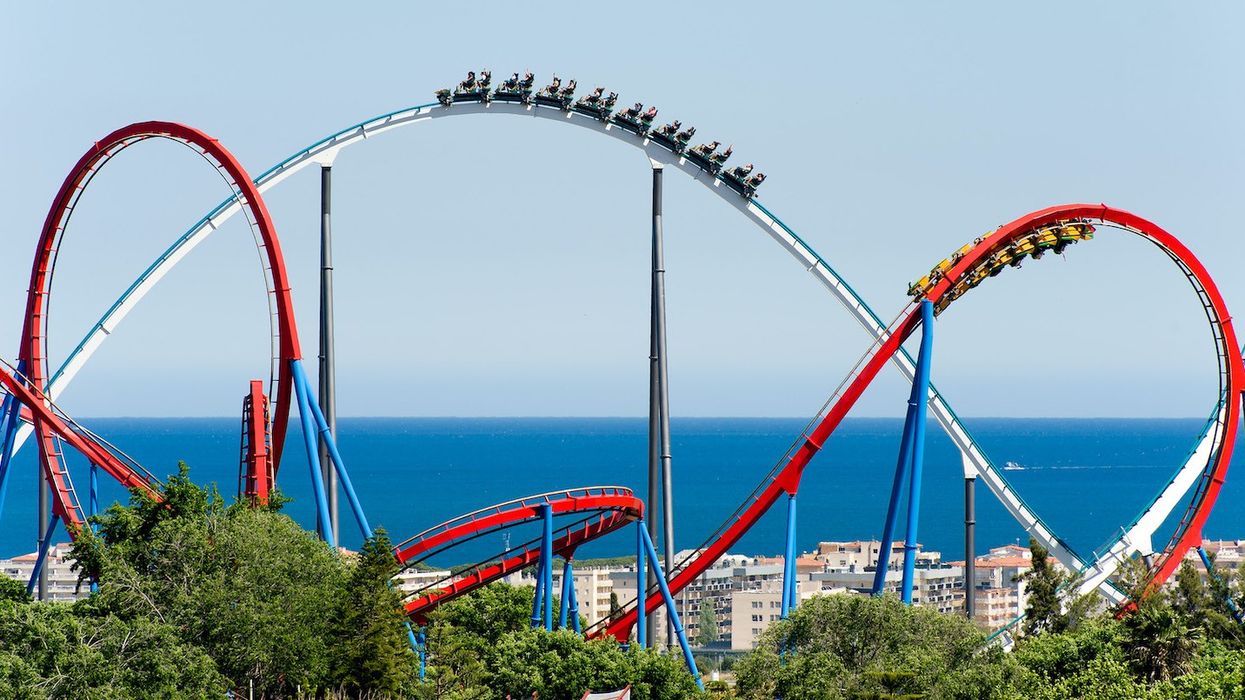
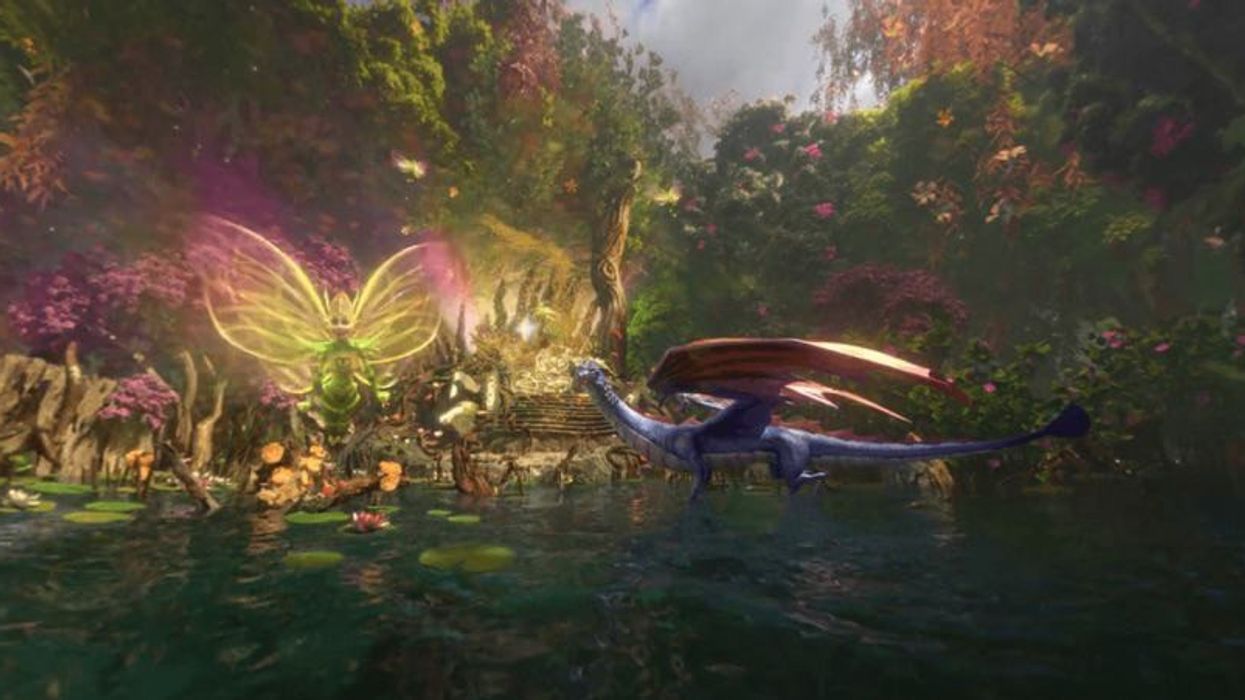

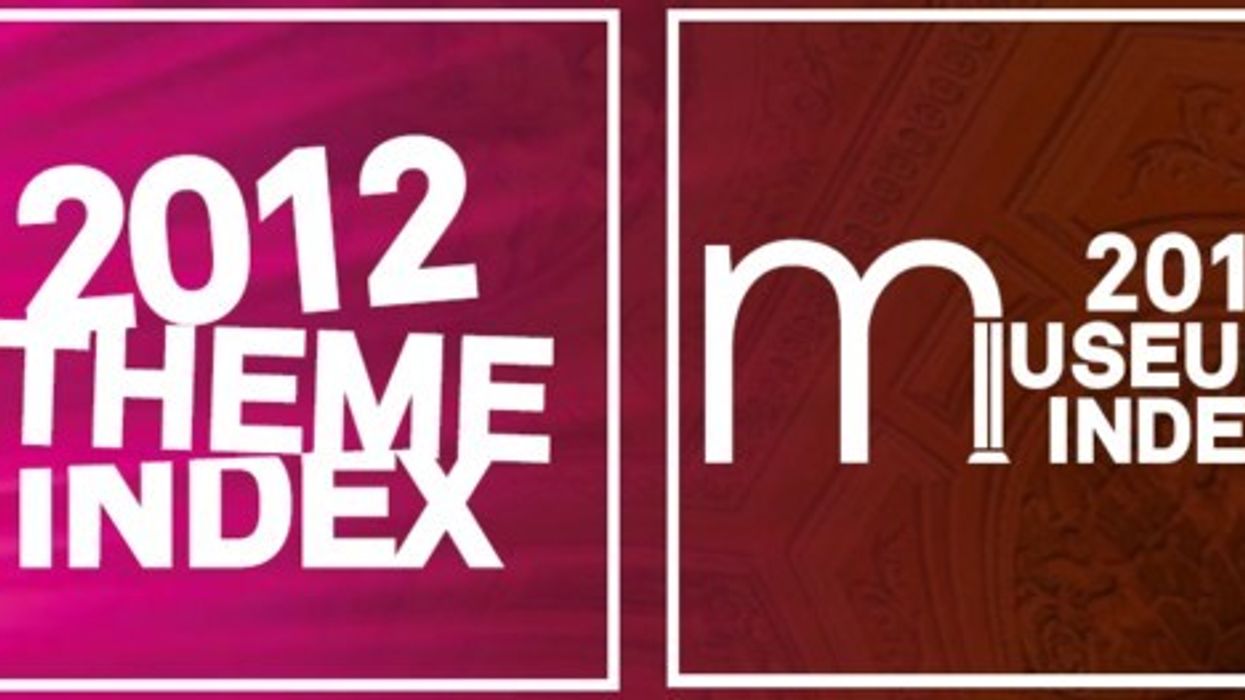
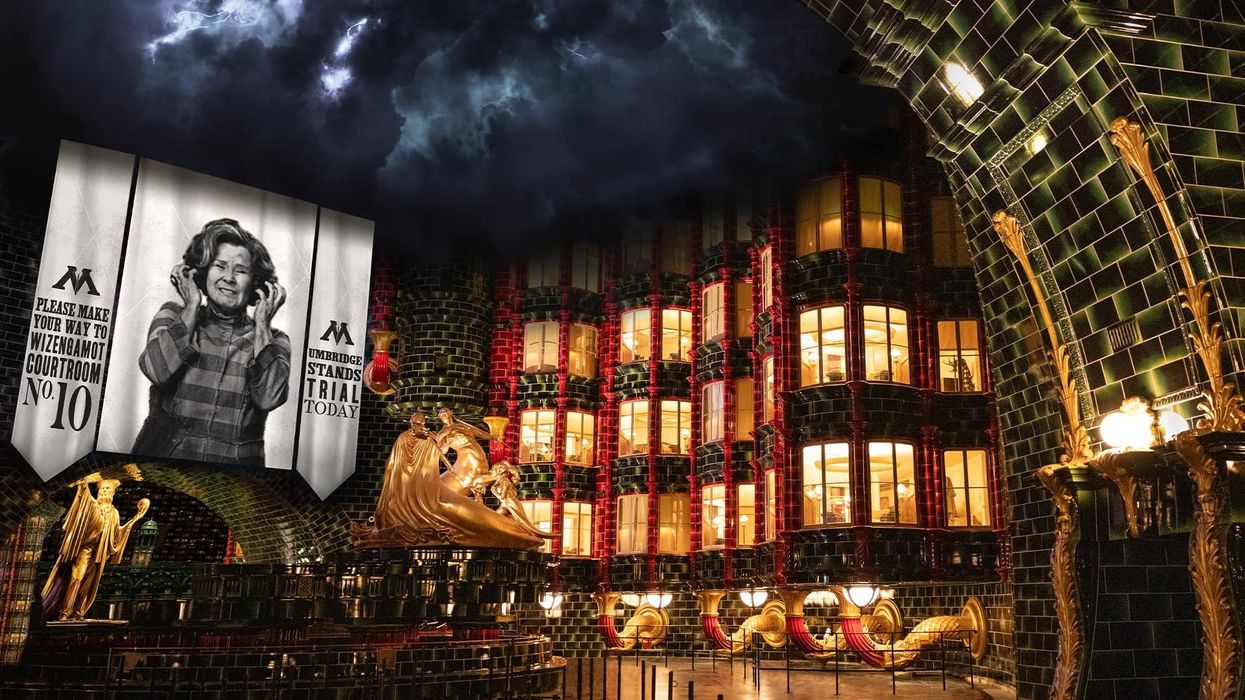
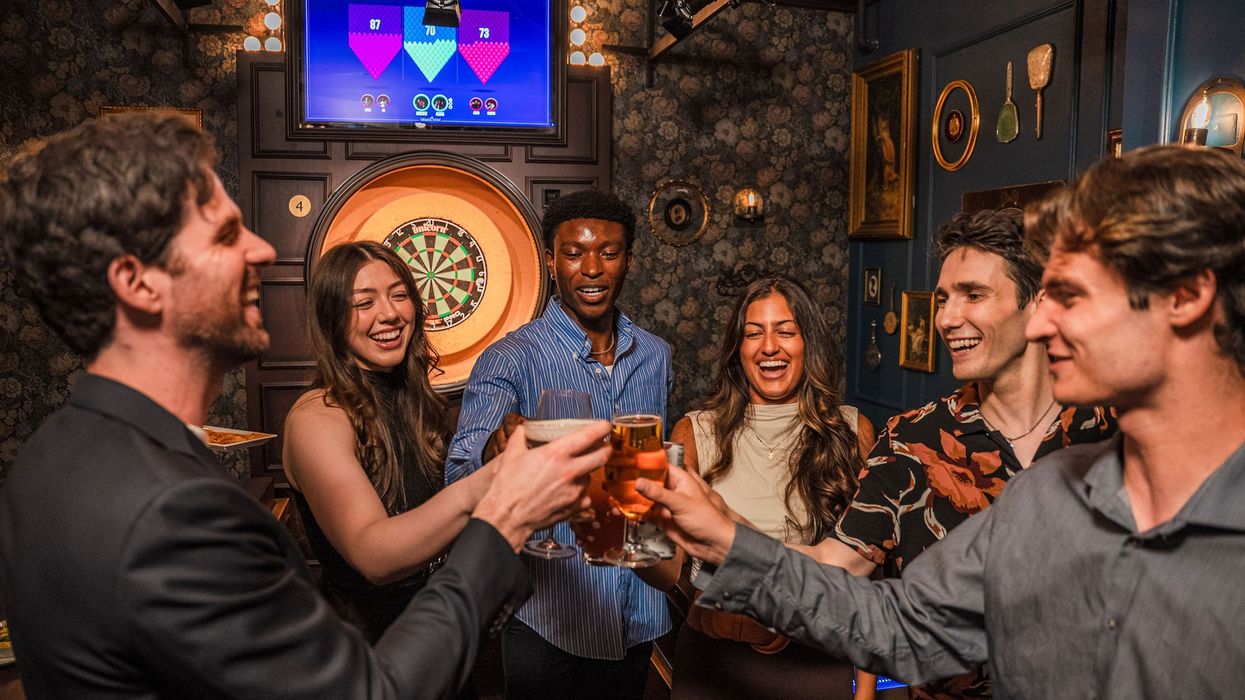
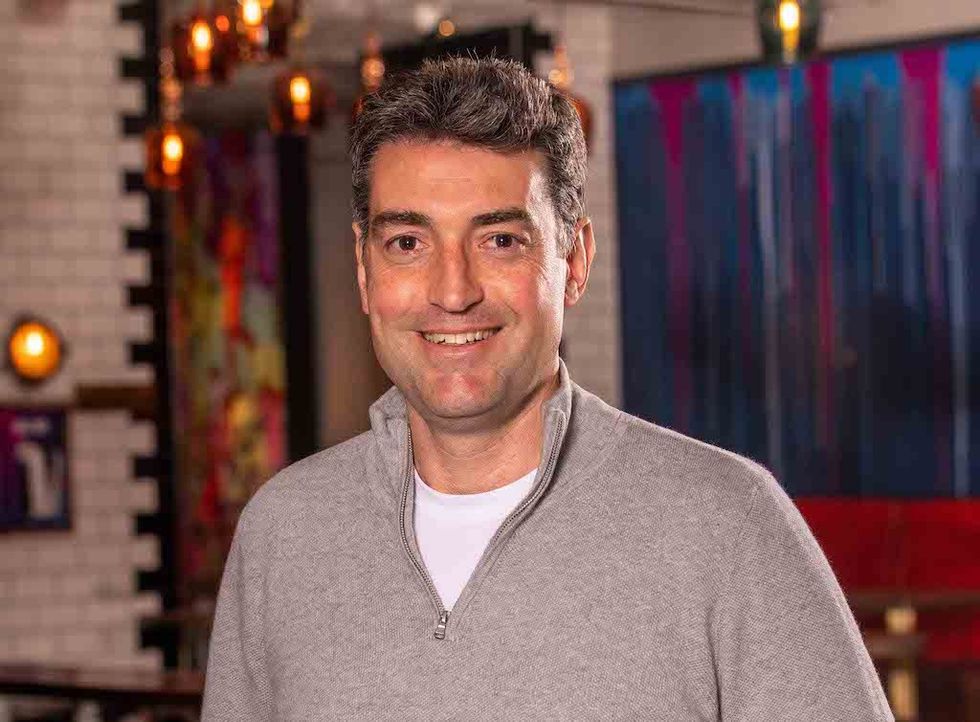 Toby Harris
Toby Harris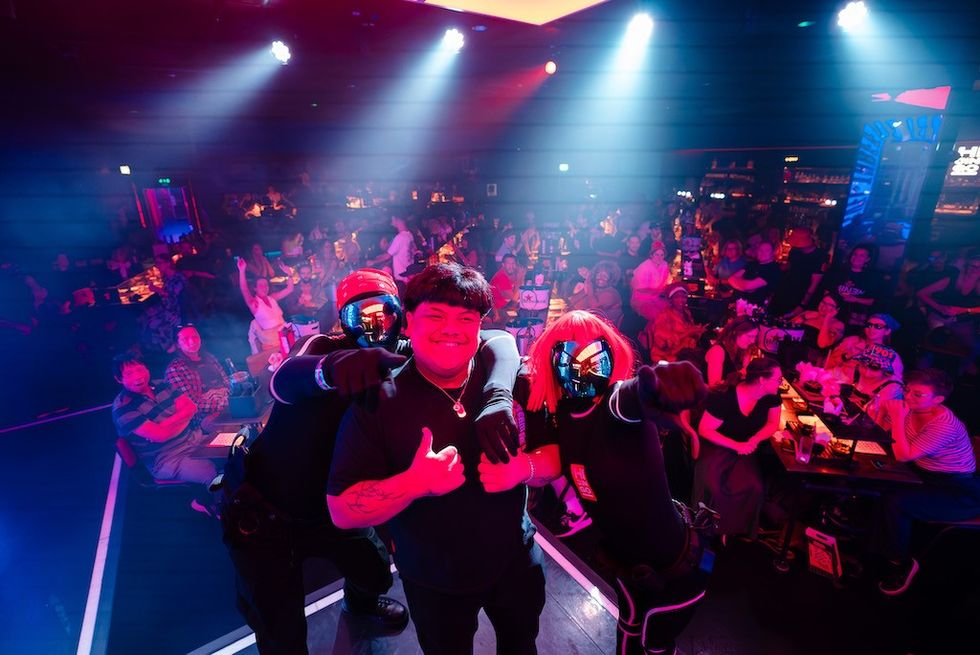 Hijingo
Hijingo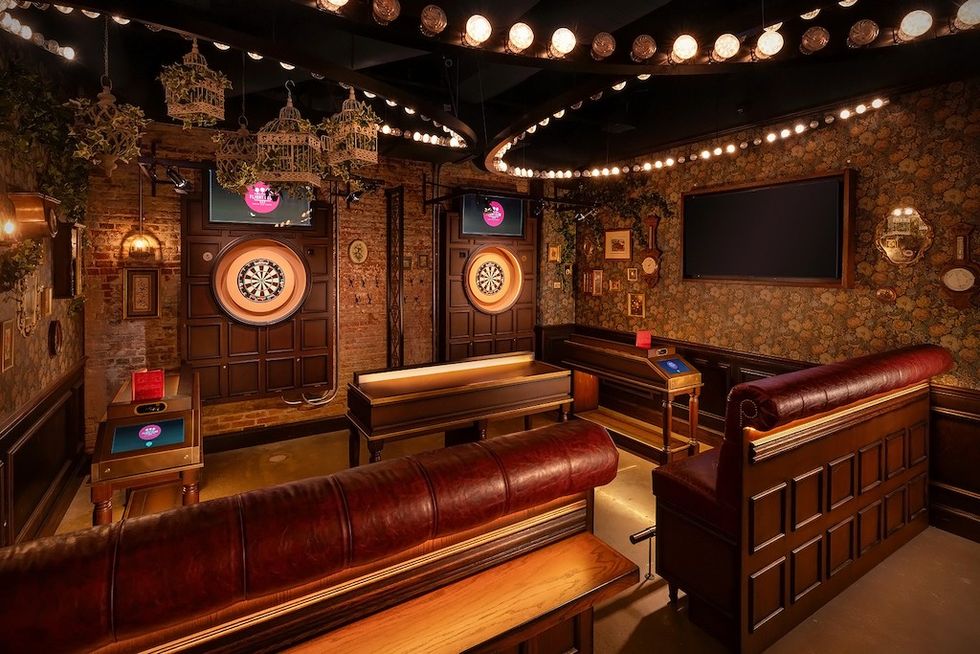 Flight Club, Washington D.C.
Flight Club, Washington D.C.
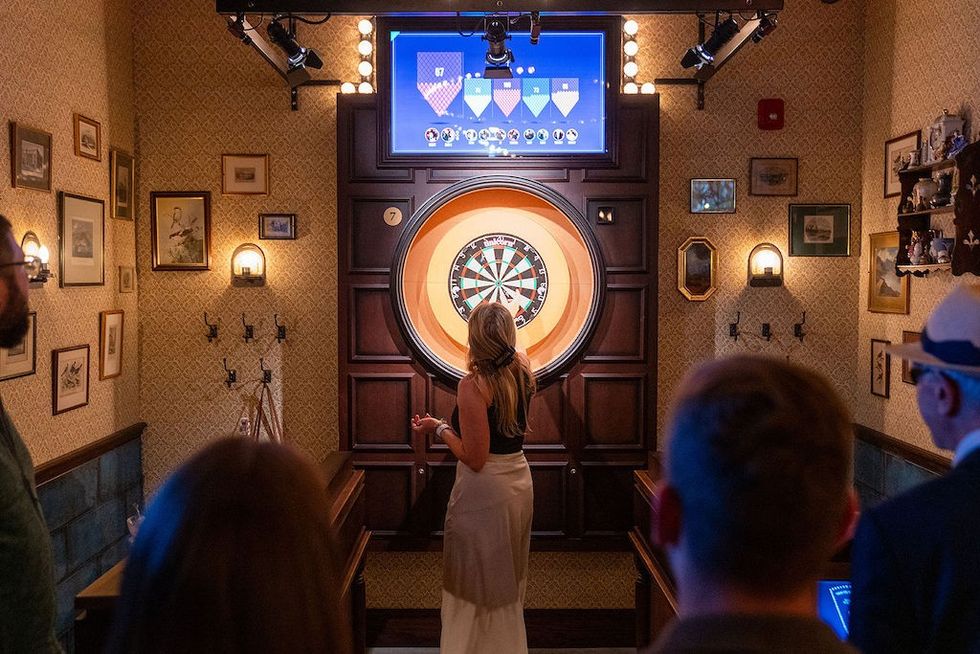 Flight Club Philadelphia
Flight Club Philadelphia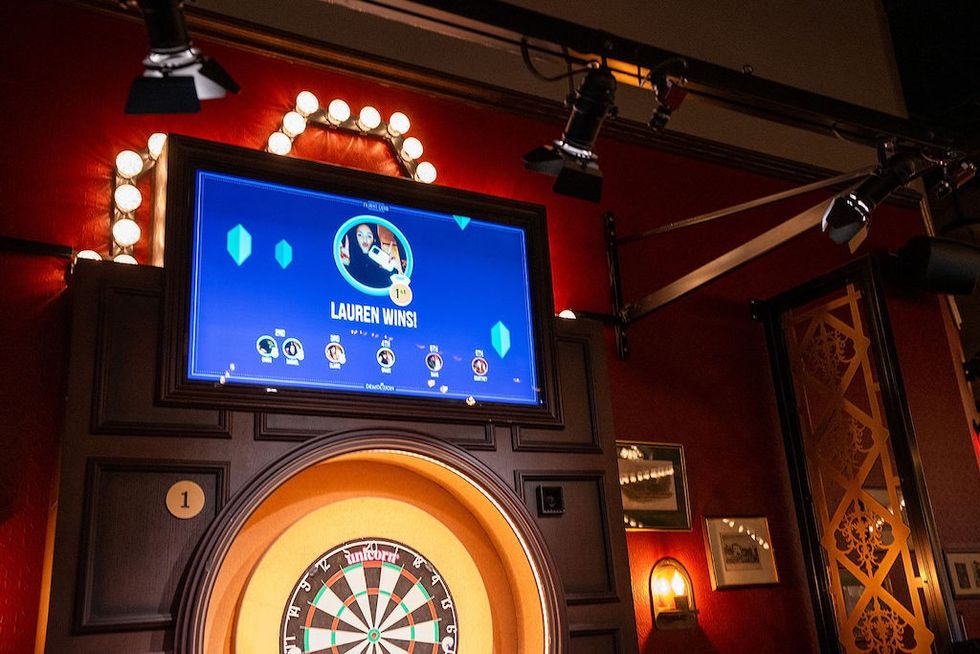 Flight Club Philadelphia
Flight Club Philadelphia Bounce
Bounce Hijingo
Hijingo Bounce
Bounce
 Fernando Eiroa
Fernando Eiroa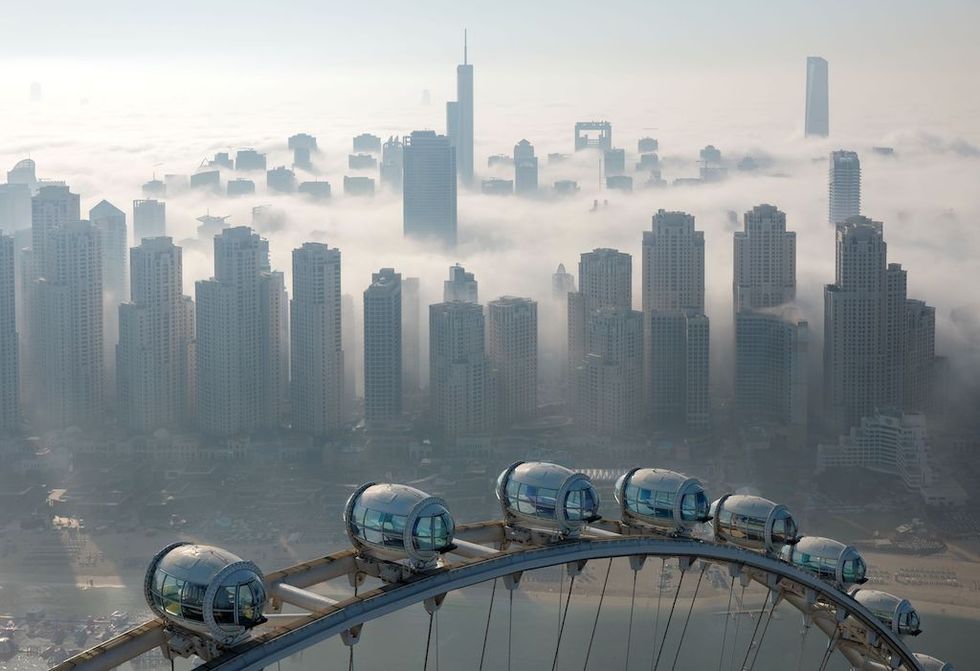
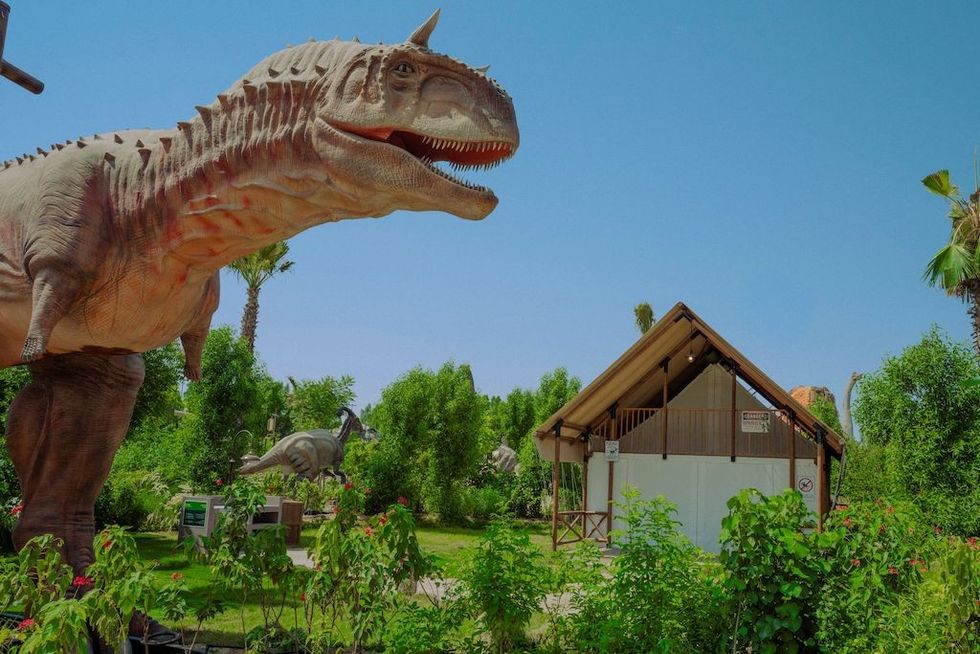
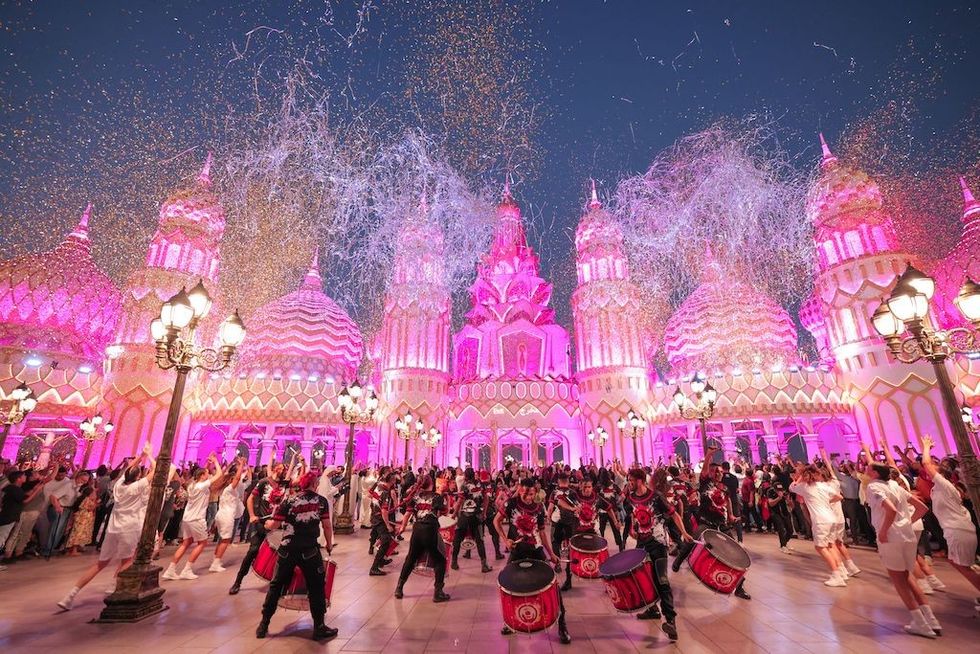
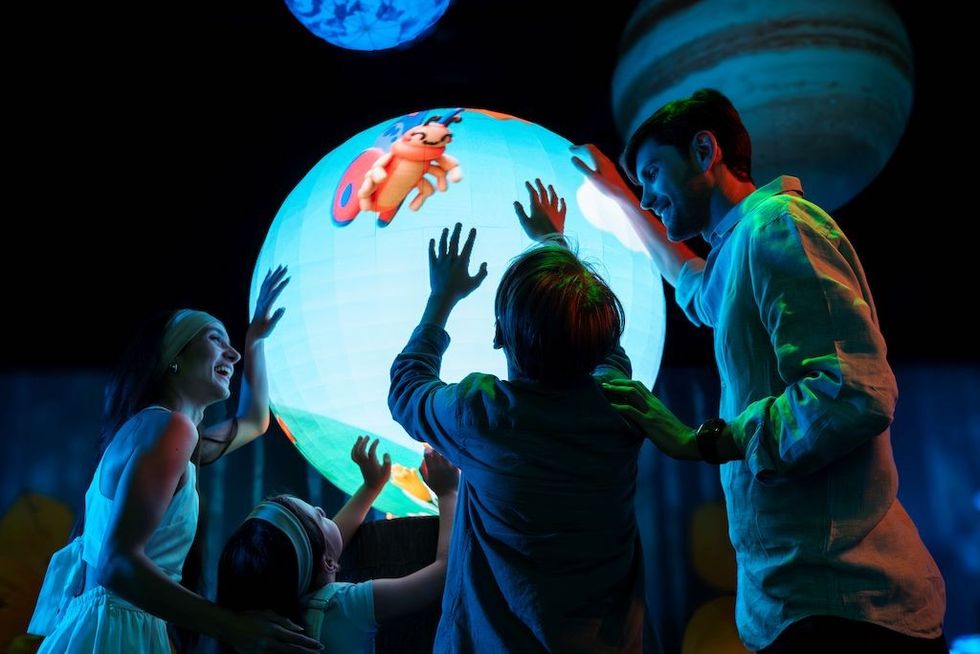



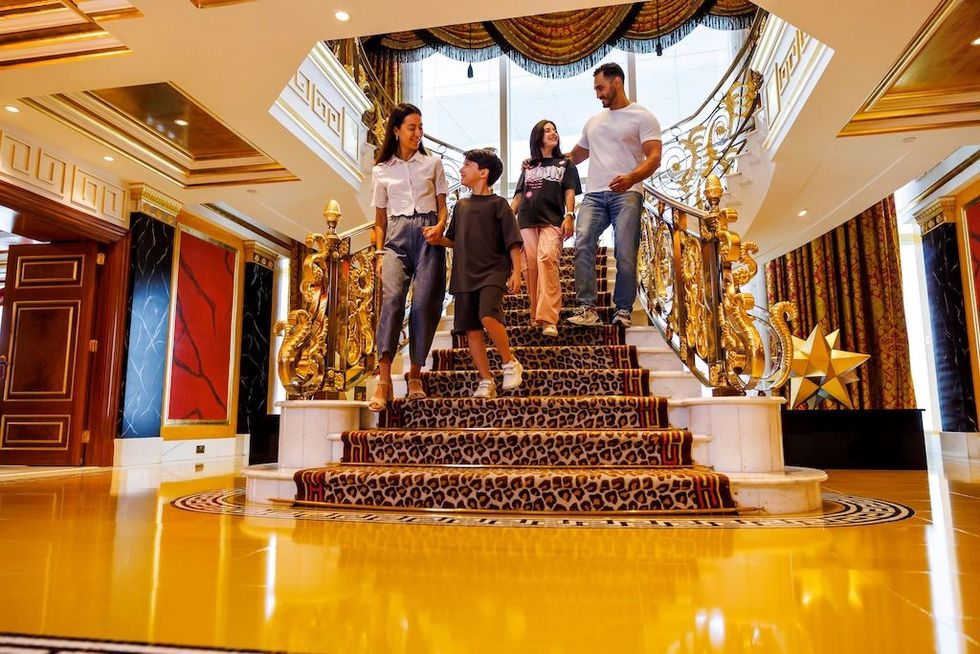



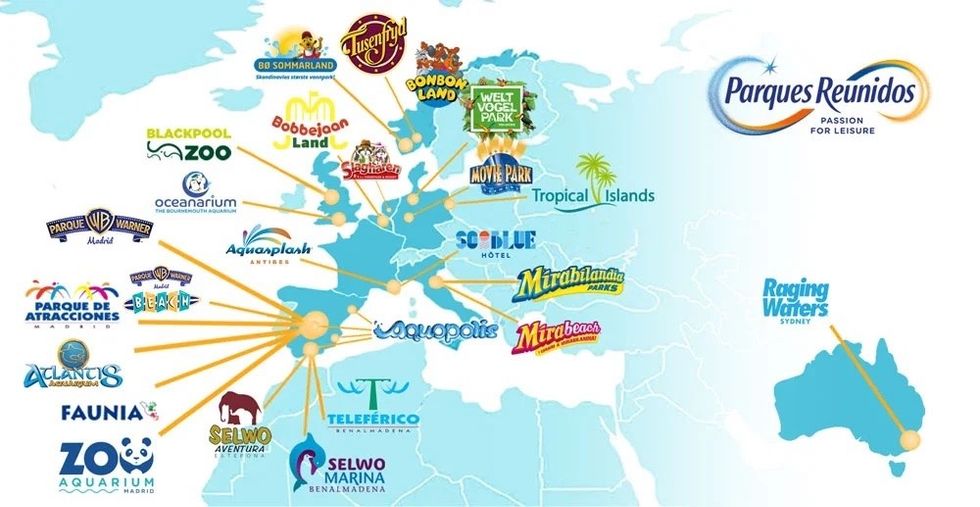
 Nickelodeon Land at Parque de Atracciones de Madrid
Nickelodeon Land at Parque de Atracciones de Madrid Raging Waters
Raging Waters  Mirabilandia's iSpeed coaster
Mirabilandia's iSpeed coaster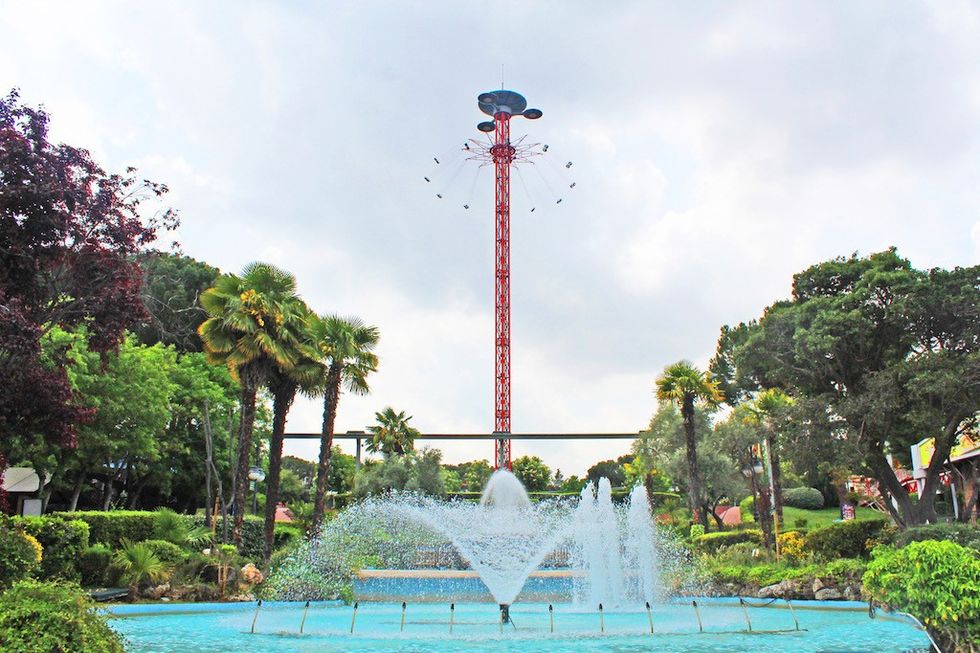 Parque de Atracciones de Madrid
Parque de Atracciones de Madrid Ferracci at the ribbon-cutting ceremony for Nickelodeon Land at Mirabilandia, with (left) Marie Marks, senior VP of global experiences for Paramount and (cutting the ribbon) Sabrina Mangina, GM at Mirabilandia
Ferracci at the ribbon-cutting ceremony for Nickelodeon Land at Mirabilandia, with (left) Marie Marks, senior VP of global experiences for Paramount and (cutting the ribbon) Sabrina Mangina, GM at Mirabilandia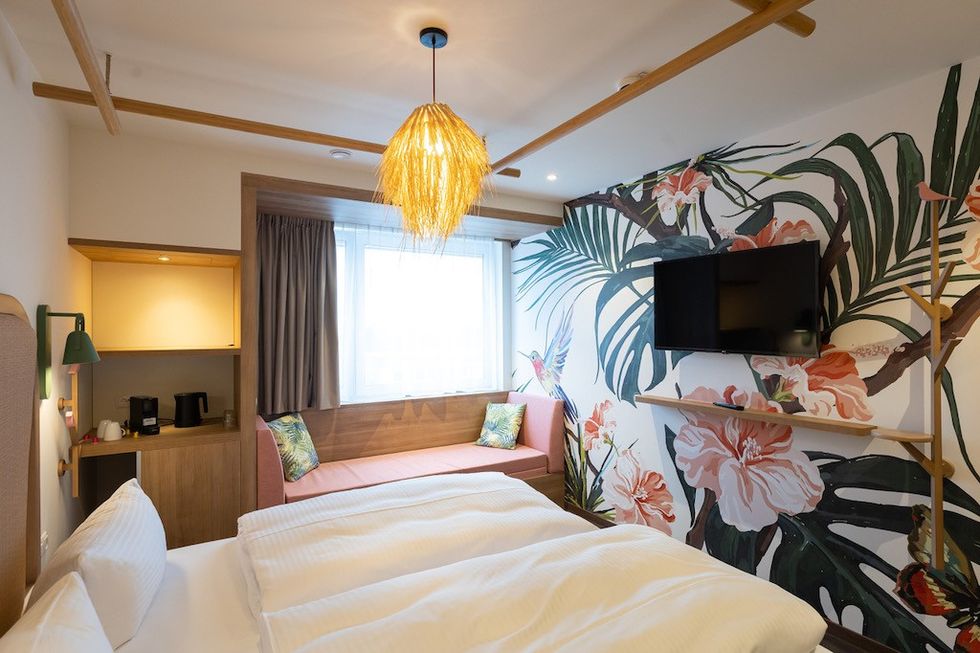 Tropical Islands OHANA hotel
Tropical Islands OHANA hotel Elephants at Blackpool Zoo
Elephants at Blackpool Zoo 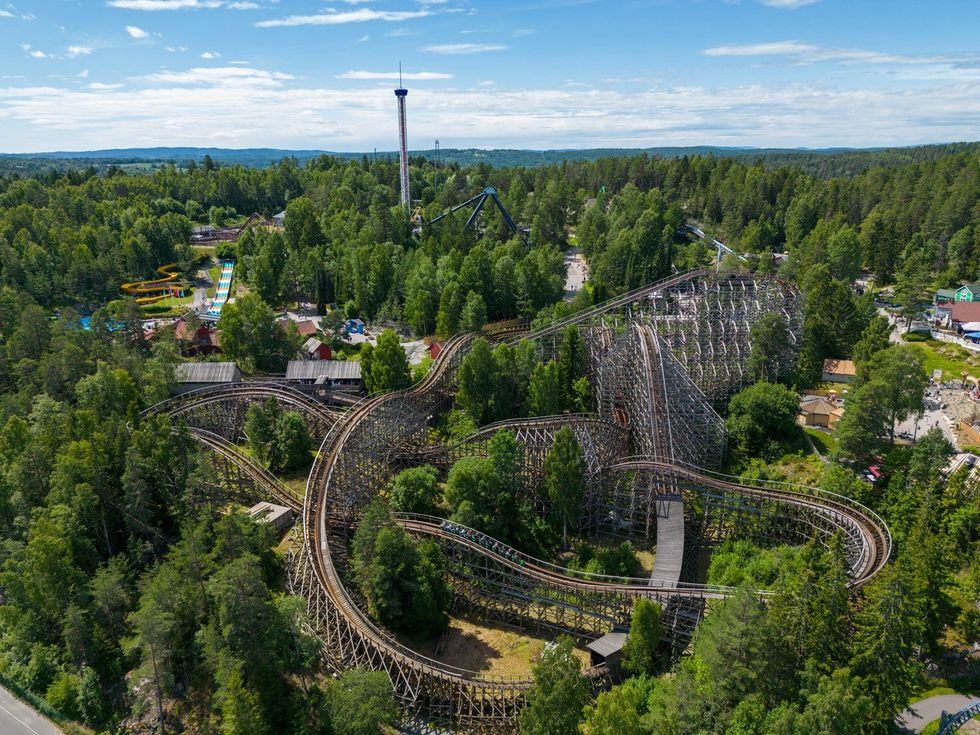 Tusenfryd
Tusenfryd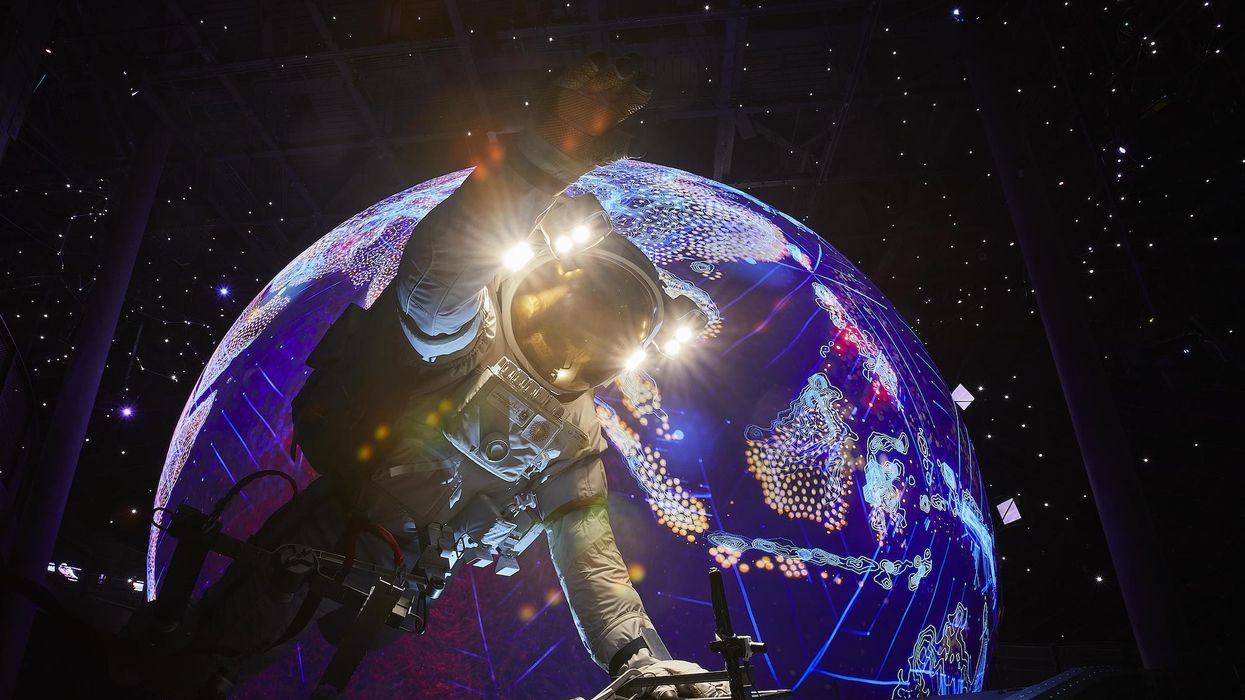
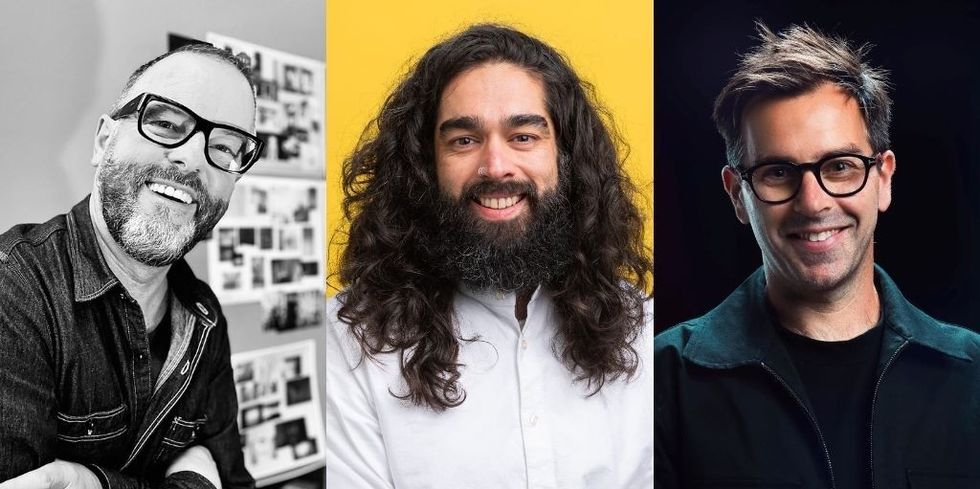 Andrew Thomas, Jason Aldous and Rik Athorne
Andrew Thomas, Jason Aldous and Rik Athorne
